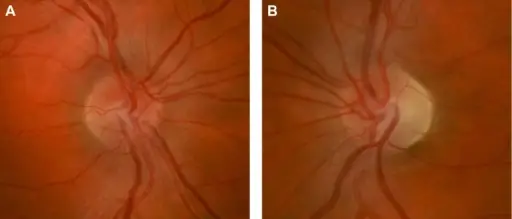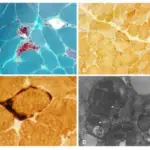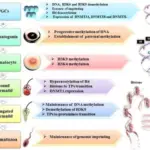Leber hereditary optic neuropathy is s an inherited form of bilateral optic atrophy in which the primary etiological event is a mutation in the mitochondrial genome.
What is the Pathology of Leber Hereditary Optic Neuropathy?
The pathology of Leber hereditary optic neuropathy is:
-Etiology: The cause of Leber hereditary optic neuropathy is a mutation at mtDNA nucleotide.
-Genes involved: mutations in the MT-ND1, MT-ND4, MT-ND4L, and MT-ND6 genes cause Leber hereditary optic neuropathy.
-Pathogenesis: The sequence of events that lead to Leber hereditary optic neuropathy are mutations in mitochondrial DNA that can alter the function of the mitochondria.
How does Leber Hereditary Optic Neuropathy Present?
Patients with Leber hereditary optic neuropathy are typically males about five times more than females. Patients tend to present at age range of 15-55 years old. The symptoms, features, and clinical findings associated with Leber hereditary optic neuropathy include decreased visual acuity, loss of color vision and a central scotoma.
How is Leber Hereditary Optic Neuropathy Diagnosed?
Leber hereditary optic neuropathy is diagnosed based on ophthalmologic findings which involves dilated fundus examination to identify characteristic changes in the optic disc and vascular changes during the acute phase, visual fields, electrophysiologic studies, and imaging, particularly OCT. Molecular genetic testing for mitochondrial genes associated with LHON can be used to confirm diagnosis.
How is Leber Hereditary Optic Neuropathy Treated?
Leber hereditary optic neuropathy is treated with supportive management and treatment through the usage of visual aids, occupational rehabilitation, and local social services.
What is the Prognosis of Leber Hereditary Optic Neuropathy?
The prognosis of Leber hereditary optic neuropathy is poor.



